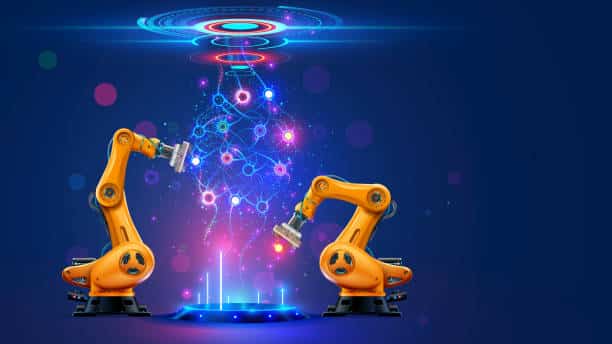As technology continues to evolve and businesses face ever-increasing pressure to optimize their operations, enhance customer experiences, and maintain competitiveness, the role of automation has never been more critical. One of the most impactful technologies helping organizations across industries achieve these objectives is Robotic Process Automation (RPA). By automating repetitive and mundane tasks, RPA is transforming how businesses operate, enabling them to save time, reduce costs, minimize errors, and focus on more strategic initiatives.
As we approach 2025, RPA is expected to become a key enabler of digital transformation. While many organizations have already seen the value of RPA in their operations, those that haven’t yet adopted this technology may face challenges in staying competitive. This article explores why companies should adopt RPA in 2025, the benefits it offers, trends shaping its evolution, and practical insights on implementing RPA effectively.
What is Robotic Process Automation (RPA)?

Robotic Process Automation (RPA) refers to the use of software bots or “robots” to automate repetitive, rule-based tasks that were previously performed by humans. These bots interact with applications, systems, and processes to mimic human actions—clicking buttons, filling in forms, reading and writing data—within established workflows. RPA is highly efficient, capable of handling vast volumes of data, and provides high levels of accuracy and consistency.
RPA doesn’t replace existing systems or require extensive changes to current infrastructure; instead, it operates alongside existing tools, making it an ideal solution for businesses seeking to improve operational efficiency without major disruptions. With no need for deep technical expertise to set up, RPA is highly accessible and can be used across a range of departments including finance, human resources, customer service, and IT.
As we move into 2025, the scope of RPA will only expand, with organizations using it to handle increasingly complex tasks by integrating it with emerging technologies like Artificial Intelligence (AI) and Machine Learning (ML). These advancements are expected to unlock even greater efficiencies, particularly in areas that involve unstructured data and decision-making.
Key Takeaways
- Boost Operational Efficiency: RPA automates repetitive tasks, freeing up employees to focus on higher-value work, which improves overall productivity.
- Cost Reduction: RPA enables businesses to scale efficiently without significant increases in labor costs, resulting in substantial long-term savings.
- Accuracy and Compliance: RPA eliminates human error, ensuring processes are executed accurately, reducing risks associated with non-compliance and operational mistakes.
- Enhanced Customer Experience: Automation improves speed, accuracy, and personalization in customer interactions, leading to better customer satisfaction and loyalty.
- Scalability and Flexibility: RPA allows businesses to grow and adapt quickly to changes in demand, offering a scalable solution without increasing headcount.
- Competitive Advantage: Early adoption of RPA will provide a competitive edge, helping businesses stay ahead of the curve in a fast-changing marketplace.
Why Should Companies Adopt RPA in 2025?

The decision to implement RPA is not just about automating tasks—it’s about transforming how businesses operate and compete in an increasingly digital world. Below are the key reasons why companies should prioritize RPA adoption in 2025.
1. Boost Operational Efficiency and Productivity
In a highly competitive business environment, efficiency is key to survival. RPA is one of the most effective ways to streamline operations and eliminate inefficiencies in business processes. By automating manual, repetitive tasks such as data entry, invoice processing, payroll management, and order processing, organizations can significantly reduce the time spent on low-value tasks.
In 2025, businesses will continue to face increasing pressure to do more with fewer resources. RPA offers a way to tackle this challenge head-on by allowing employees to focus on more strategic activities. The bots can handle the routine, time-consuming tasks, freeing up human workers to engage in higher-value work like decision-making, problem-solving, and creative tasks. This can dramatically improve productivity across the organization, driving growth and improving performance.
2. Cost Reduction and Improved ROI
Cost reduction is one of the most compelling reasons for adopting RPA. While there is an initial investment required in implementing RPA technology, the long-term savings can be substantial. By automating labor-intensive processes, businesses can drastically reduce operational costs. For example, tasks like invoice processing, data validation, and report generation that require significant human involvement can be automated, reducing the need for manual labor and decreasing the risk of errors.
Furthermore, RPA provides organizations with the ability to scale operations without significantly increasing headcount. Bots can work 24/7, handling larger volumes of work without requiring additional resources. This scalability can result in a high return on investment (ROI), as businesses can manage growing workloads with minimal incremental costs.
For businesses looking to grow in 2025, RPA provides a cost-effective way to expand operations without sacrificing quality or increasing operational costs.
3. Enhanced Accuracy and Reduced Risk of Errors
Human error is an inevitable part of manual processes, particularly when tasks are repetitive and mundane. However, in critical functions such as financial processing, compliance reporting, and data entry, errors can lead to significant problems, including costly fines, customer dissatisfaction, and legal issues.
RPA eliminates these risks by performing tasks with high accuracy and consistency. Software bots are programmed to follow predefined rules and instructions, ensuring that processes are executed without deviation. This level of precision helps organizations avoid costly mistakes, improve data quality, and enhance compliance with regulatory standards.
For example, in financial services, RPA can help ensure accurate reconciliation of transactions, reducing the risk of fraud and errors in financial reporting. In healthcare, RPA can help automate administrative tasks such as patient record management, improving accuracy and reducing the potential for errors that could affect patient care.
4. Improved Customer Experience and Satisfaction
In the digital age, customers expect fast, efficient, and personalized service at all touchpoints. Businesses that fail to meet these expectations risk losing customers to more agile competitors. RPA plays a key role in improving customer experience by enabling faster response times, more accurate information, and personalized services.
By automating customer-facing processes such as data retrieval, order processing, and customer support ticketing, RPA can enhance the speed and quality of service. For example, RPA bots can instantly retrieve customer information from CRM systems, allowing customer service representatives to provide more tailored responses in real-time. This automation results in quicker issue resolution, reducing customer wait times and improving overall satisfaction.
As customer expectations continue to rise, companies that invest in RPA will be better equipped to deliver seamless, fast, and efficient services, strengthening customer loyalty and satisfaction.
5. Scalability and Flexibility for Growth
As businesses grow, they often face the challenge of scaling their operations without increasing their workforce or operational costs. Traditional methods of scaling often involve hiring additional staff, investing in new systems, or adding infrastructure. However, these approaches can be expensive and time-consuming.
RPA offers a scalable solution that allows businesses to expand their operations without significantly increasing labor costs. Bots can be easily deployed to handle increased workloads, enabling businesses to scale efficiently without adding new employees or resources. Whether it’s processing more transactions, handling a larger volume of customer support requests, or managing increased supply chain demands, RPA provides the flexibility to adapt quickly and effectively to changing business needs.
In 2025, organizations will need to be highly agile to keep up with market demands, and RPA can provide the scalability necessary for sustained growth.
6. Empowering Employees and Improving Engagement
A common misconception about automation is that it replaces human workers. While RPA certainly automates repetitive tasks, its true value lies in empowering employees to focus on more creative, impactful, and strategic work. When employees no longer have to spend their time on mundane tasks, they can dedicate their skills and energy to higher-value activities that contribute directly to business innovation and growth.
By relieving employees of routine tasks, RPA helps boost job satisfaction, engagement, and retention. Employees can use their time to engage in tasks that require critical thinking, decision-making, and problem-solving, all of which contribute to professional growth and development.
This empowerment also leads to a more dynamic and motivated workforce, which is crucial for businesses looking to thrive in an increasingly competitive and fast-paced world.
7. Competitive Advantage in the Marketplace
In today’s fast-paced business environment, staying ahead of the competition requires continuous innovation and operational excellence. Organizations that adopt RPA are better positioned to achieve these objectives. By streamlining operations, reducing costs, improving quality, and delivering superior customer service, RPA provides a significant competitive edge.
As more businesses adopt automation technologies, those that resist the change may find themselves falling behind. RPA enables companies to maintain their competitive edge by improving speed to market, increasing efficiency, and fostering innovation. By 2025, RPA is expected to be a standard practice across industries, and businesses that adopt it early will be better prepared to take advantage of the opportunities it presents.
Key Trends Shaping RPA in 2025
As we move into 2025, several key trends are shaping the future of RPA, including:
1. AI and ML Integration with RPA
While RPA excels at automating rule-based, repetitive tasks, the integration of Artificial Intelligence (AI) and Machine Learning (ML) is expected to take automation to the next level. AI-powered RPA can handle more complex tasks that require cognitive abilities such as decision-making, natural language processing, and image recognition.
For example, RPA combined with AI can analyze unstructured data (such as emails, documents, and social media posts), enabling businesses to automate processes like sentiment analysis, fraud detection, and customer support ticket triage. By 2025, AI-driven RPA will be able to perform tasks previously thought to be outside the reach of automation, driving even greater efficiencies.
2. Cloud-Based RPA Solutions
The rise of cloud computing is transforming the RPA landscape. Cloud-based RPA offers several advantages, including lower upfront costs, greater scalability, and faster deployment. Instead of having to invest in on-premise infrastructure, businesses can subscribe to RPA-as-a-Service models, accessing RPA capabilities through the cloud.
As cloud technology continues to evolve, the adoption of cloud-based RPA will become increasingly common, particularly for small and medium-sized businesses (SMBs) that lack the resources to implement traditional on-premise solutions.
3. Robotic Process Automation as a Service (RPAaaS)

The emergence of RPA as a Service (RPAaaS) is making automation accessible to organizations of all sizes. Through this model, businesses can access RPA solutions on a subscription basis, allowing them to automate processes
without the need for internal development and maintenance teams.
RPAaaS is expected to grow rapidly, as it enables companies to access enterprise-level automation capabilities without the significant upfront costs. By 2025, RPAaaS will likely become the preferred option for many businesses, particularly those in the SMB sector.
Also Read : https://orbitittech.com/industrial-robots-for-sale/
Conclusion
The future of business operations is automation. Robotic Process Automation (RPA) has already demonstrated its ability to improve efficiency, reduce costs, enhance customer experience, and increase productivity across a range of industries. By 2025, RPA is poised to become even more powerful as it integrates with AI, ML, and cloud technologies, allowing organizations to automate more complex tasks and scale operations faster than ever before.
Companies that adopt RPA will be better positioned to thrive in an increasingly digital and competitive world. By automating repetitive tasks, businesses can unlock new levels of efficiency, innovation, and growth, setting the stage for long-term success. Those who delay adoption may find themselves at a significant disadvantage.
FAQs
What types of processes can RPA automate?
RPA is ideal for automating repetitive, rule-based processes across various departments, including finance, HR, customer service, supply chain, and IT. Examples include data entry, invoice processing, payroll management, and customer support ticket handling.
Does RPA require specialized programming skills?
No, RPA platforms are designed to be user-friendly and do not require deep programming skills. Most RPA solutions offer visual interfaces that allow business users to automate processes with minimal technical expertise.
Can RPA be integrated with existing systems?
Yes, RPA can seamlessly integrate with existing systems and applications. It interacts with software applications in the same way humans do, through their user interfaces, without requiring changes to underlying systems.
Is RPA suitable for small and medium-sized businesses (SMBs)?
Yes, RPA is highly scalable and can be adopted by businesses of all sizes. Cloud-based RPA solutions and RPA-as-a-Service (RPAaaS) make automation accessible to SMBs without requiring large upfront investments.
What industries can benefit from RPA?
RPA can be applied across a wide range of industries, including finance, healthcare, manufacturing, retail, logistics, and customer service. Any industry with repetitive, rule-based tasks can benefit from automation.
How long does it take to implement RPA?
The time to implement RPA varies depending on the complexity of the processes being automated. For simple processes, businesses can see results in as little as a few weeks, while more complex implementations may take several months.
What are the security risks associated with RPA?
Like any technology, RPA requires proper security measures to protect sensitive data. Organizations should ensure that bots are properly secured, access controls are in place, and audits are conducted to prevent unauthorized use.




